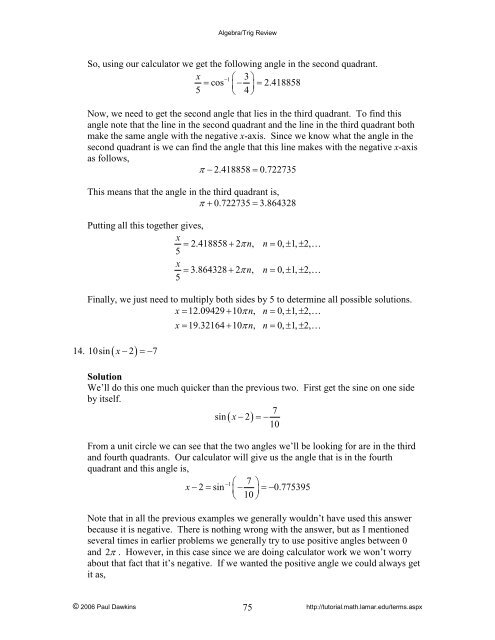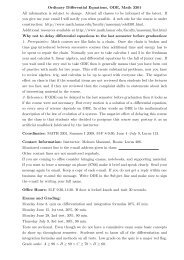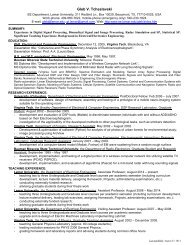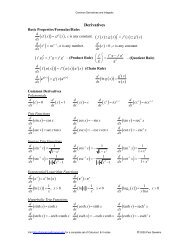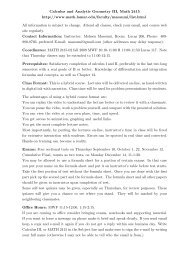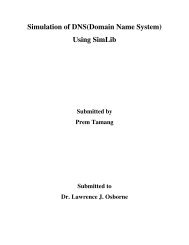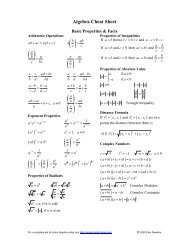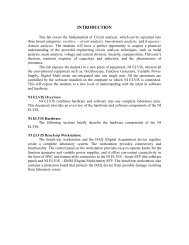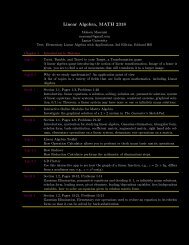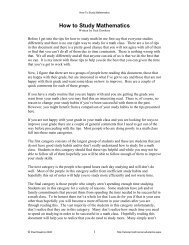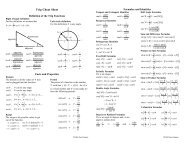Algebra/Trig Review - Pauls Online Math Notes - Lamar University
Algebra/Trig Review - Pauls Online Math Notes - Lamar University
Algebra/Trig Review - Pauls Online Math Notes - Lamar University
You also want an ePaper? Increase the reach of your titles
YUMPU automatically turns print PDFs into web optimized ePapers that Google loves.
<strong>Algebra</strong>/<strong>Trig</strong> <strong>Review</strong>So, using our calculator we get the following angle in the second quadrant.x −1 ⎛ 3 ⎞= cos ⎜− ⎟=2.4188585 ⎝ 4⎠Now, we need to get the second angle that lies in the third quadrant. To find thisangle note that the line in the second quadrant and the line in the third quadrant bothmake the same angle with the negative x-axis. Since we know what the angle in thesecond quadrant is we can find the angle that this line makes with the negative x-axisas follows,π − 2.418858 = 0.722735This means that the angle in the third quadrant is,π + 0.722735 = 3.864328Putting all this together gives,x= 2.418858 + 2 π n, 5n= 0, ± 1, ± 2, x= 3.864328 + 2 π n, 5n= 0, ± 1, ± 2, Finally, we just need to multiply both sides by 5 to determine all possible solutions.x= 12.09429 + 10 π n, n= 0, ± 1, ± 2, x= 19.32164 + 10 π n, n= 0, ± 1, ± 2, 14. 10sin ( x − 2)=− 7SolutionWe’ll do this one much quicker than the previous two. First get the sine on one sideby itself.7sin ( x − 2)=−10From a unit circle we can see that the two angles we’ll be looking for are in the thirdand fourth quadrants. Our calculator will give us the angle that is in the fourthquadrant and this angle is,−1 ⎛ 7 ⎞x − 2 = sin ⎜− ⎟=−0.775395⎝ 10 ⎠Note that in all the previous examples we generally wouldn’t have used this answerbecause it is negative. There is nothing wrong with the answer, but as I mentionedseveral times in earlier problems we generally try to use positive angles between 0and 2π . However, in this case since we are doing calculator work we won’t worryabout that fact that it’s negative. If we wanted the positive angle we could always getit as,© 2006 Paul Dawkins 75http://tutorial.math.lamar.edu/terms.aspx


